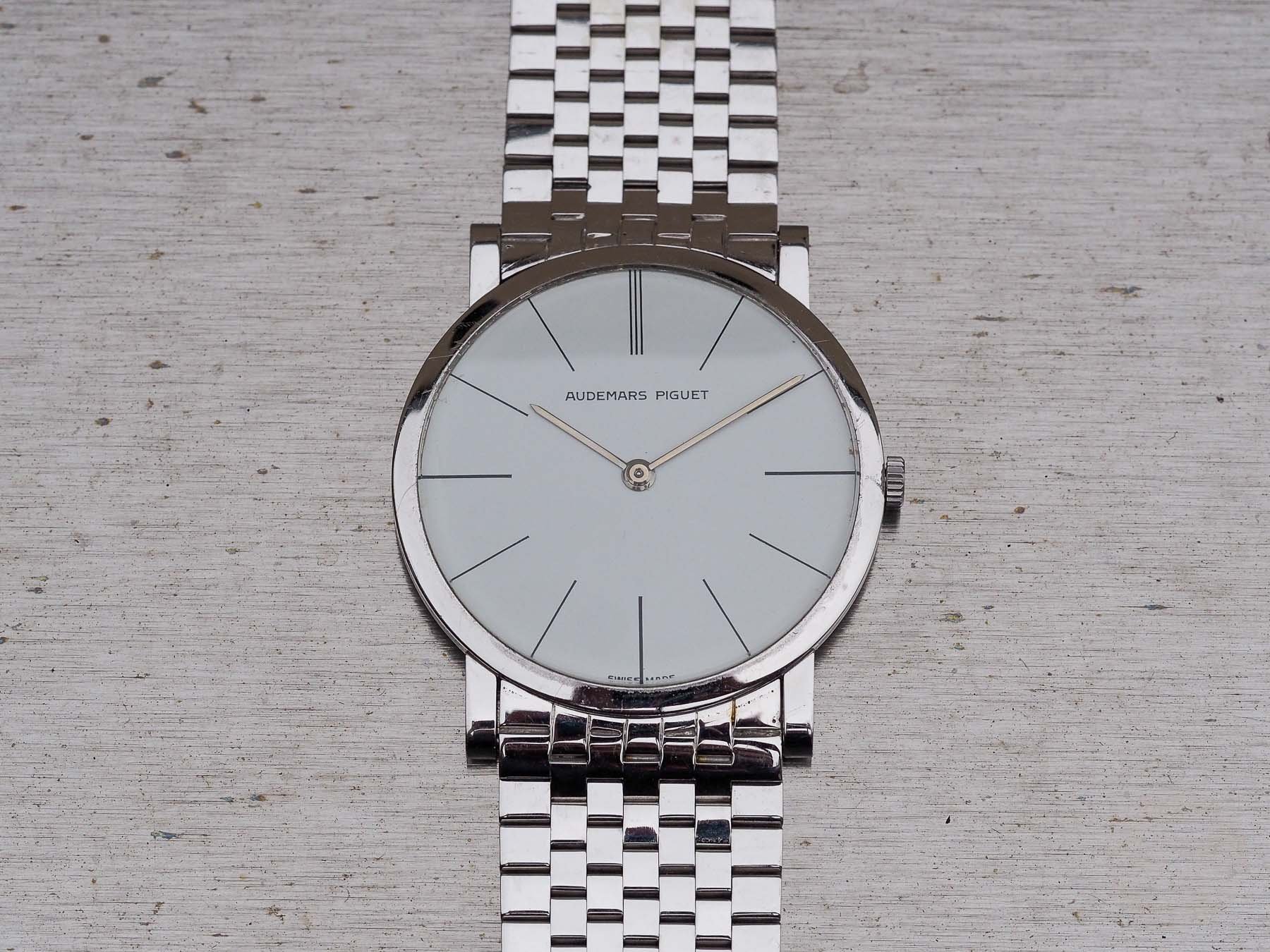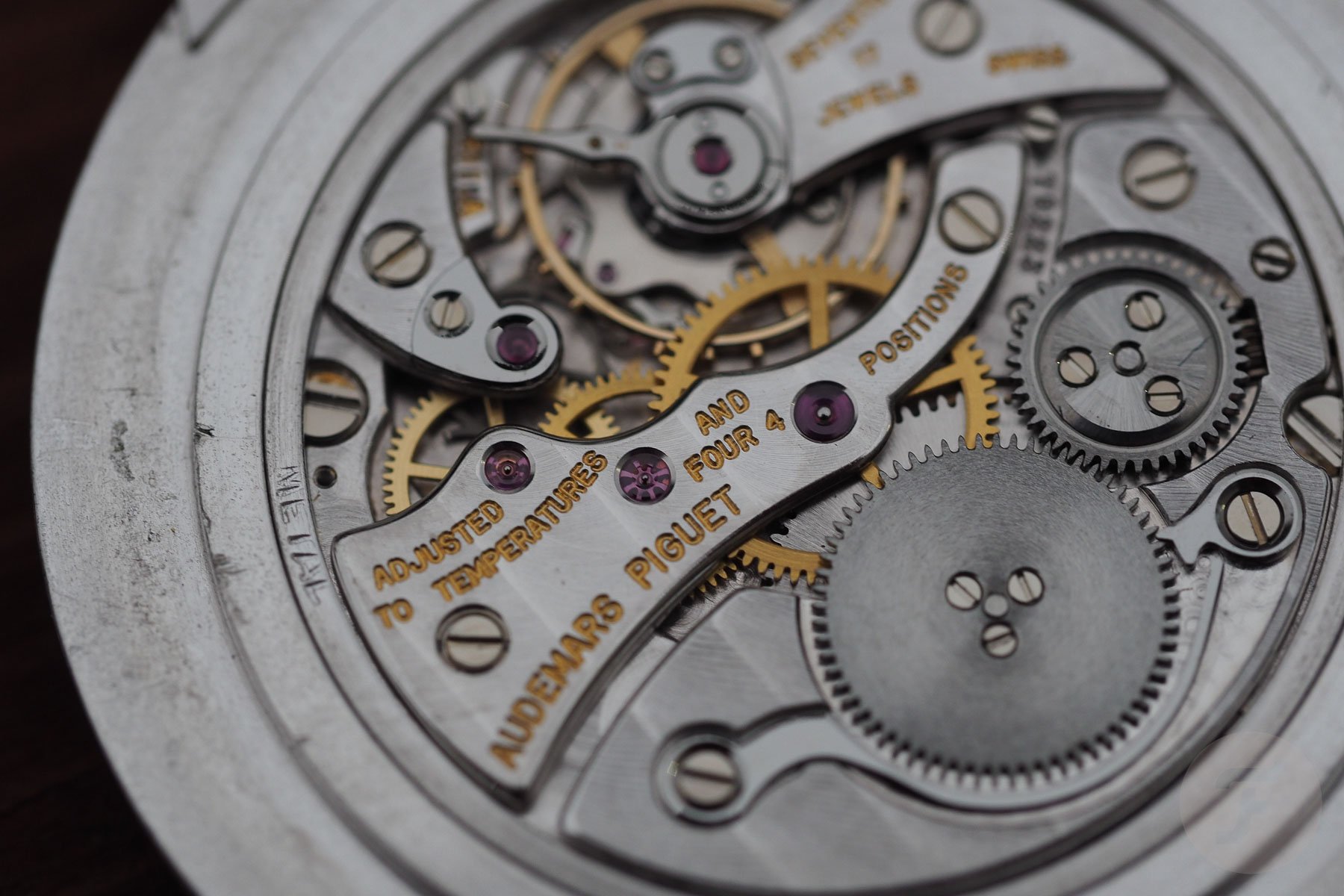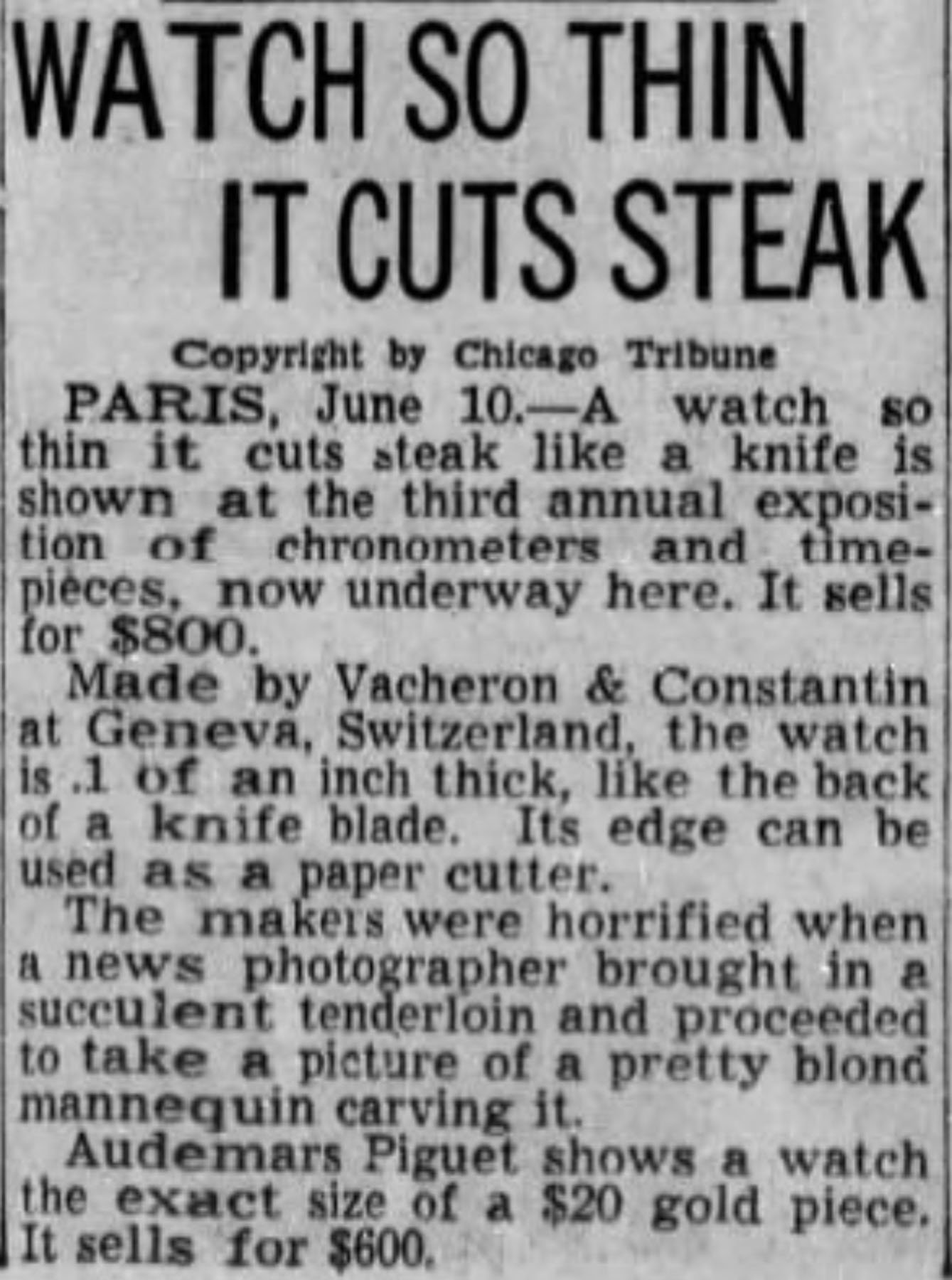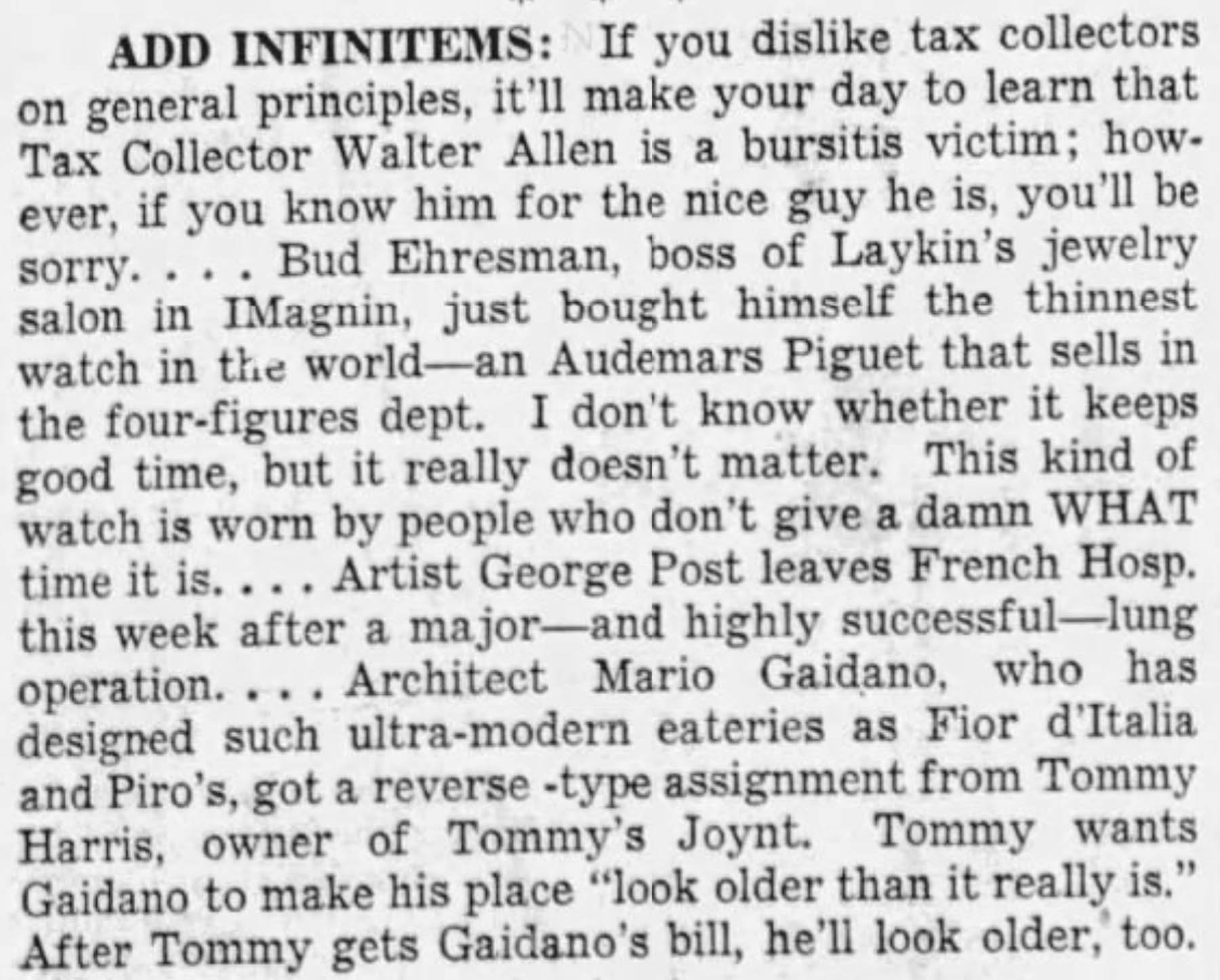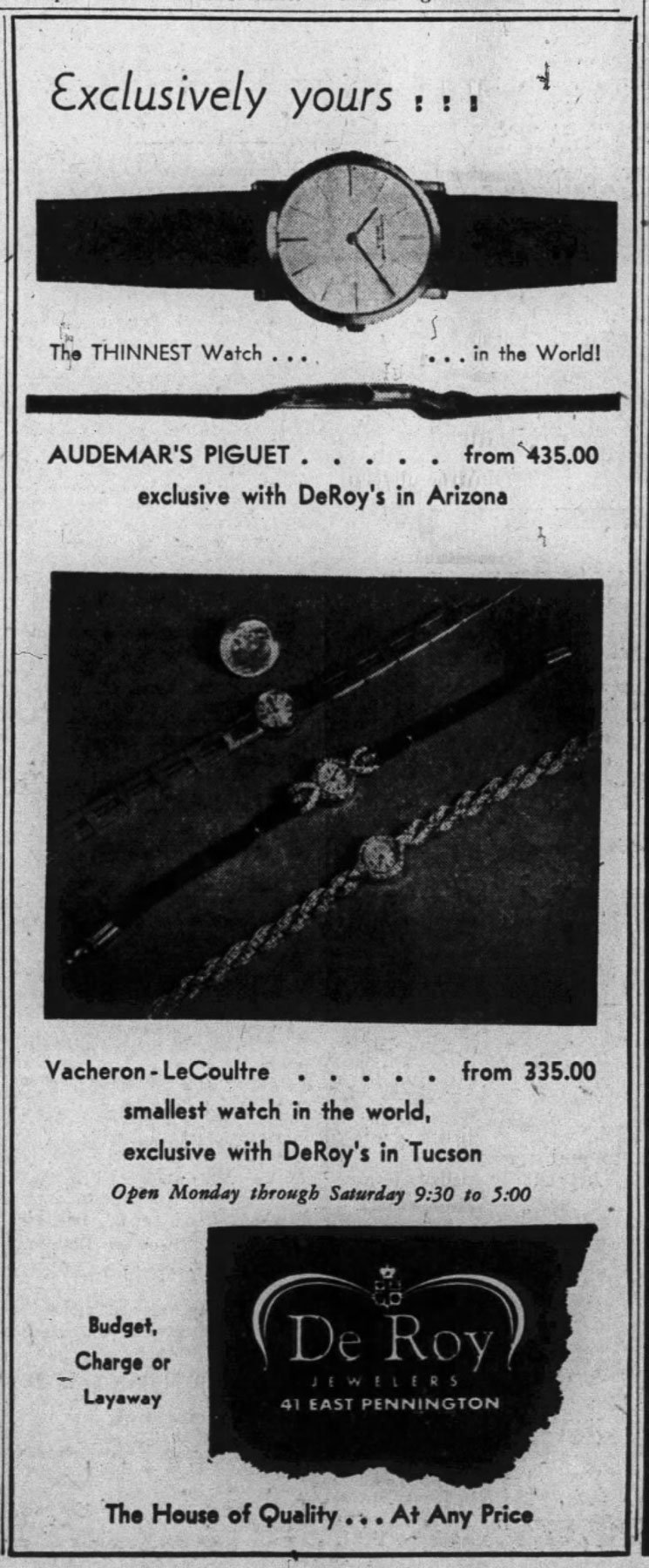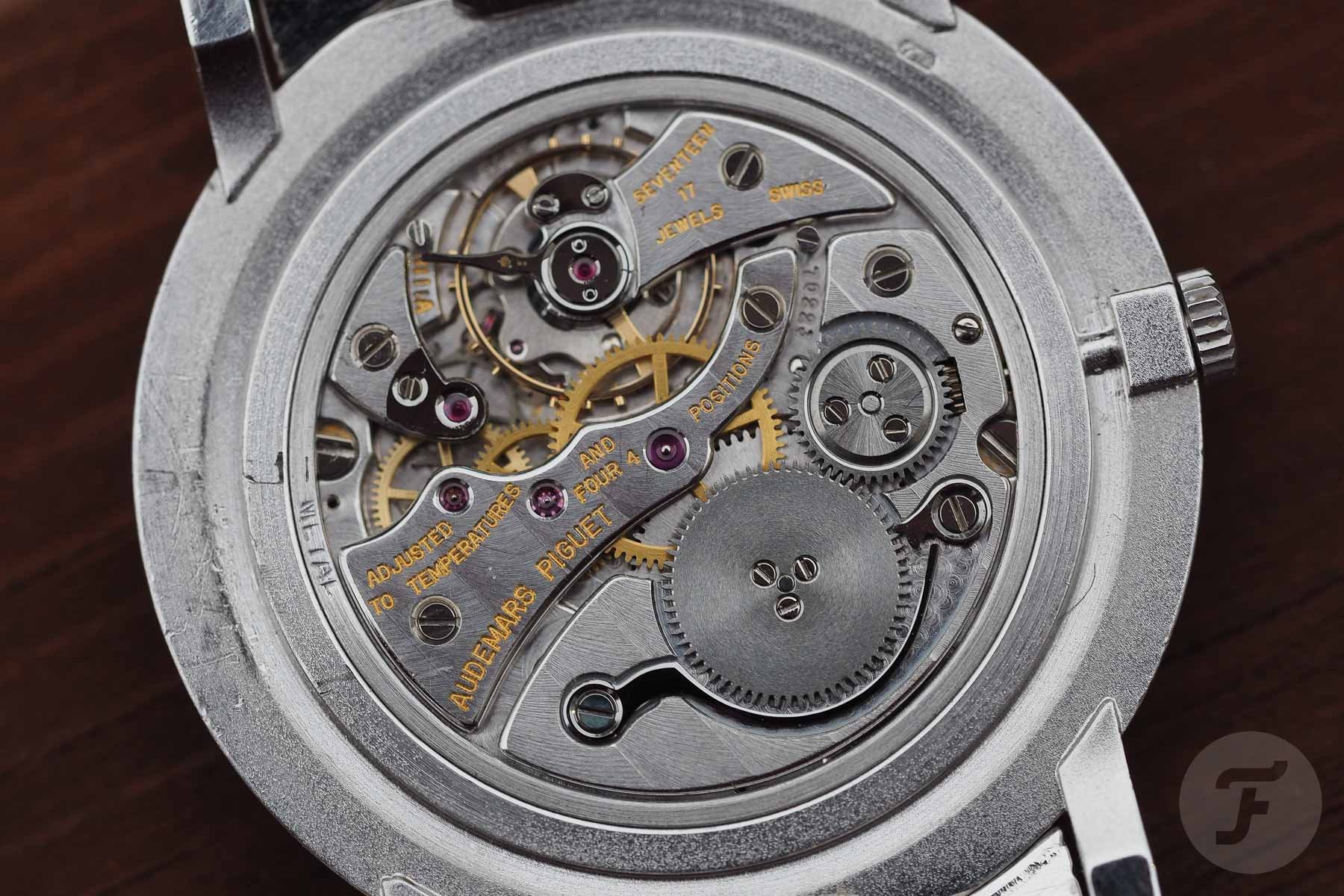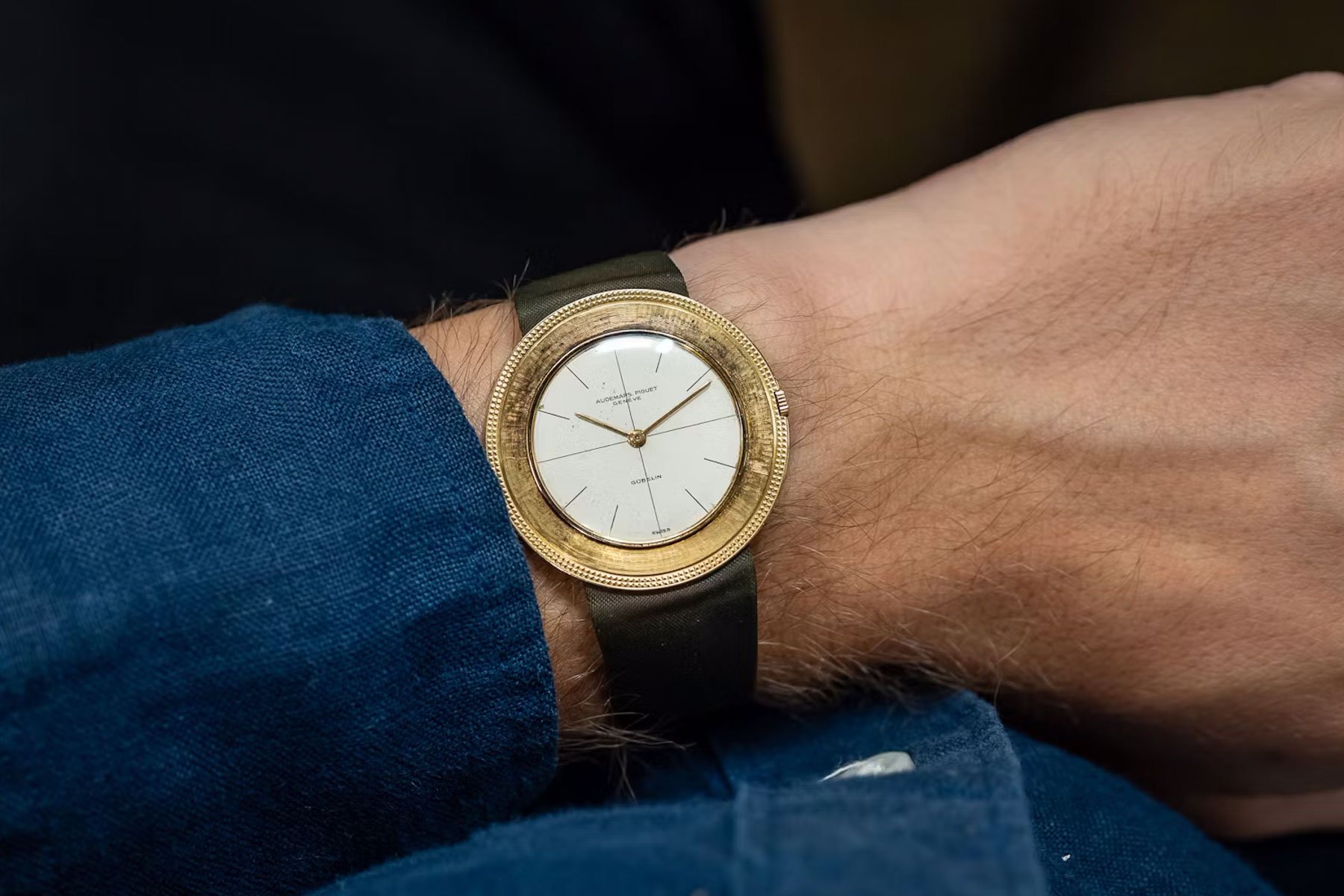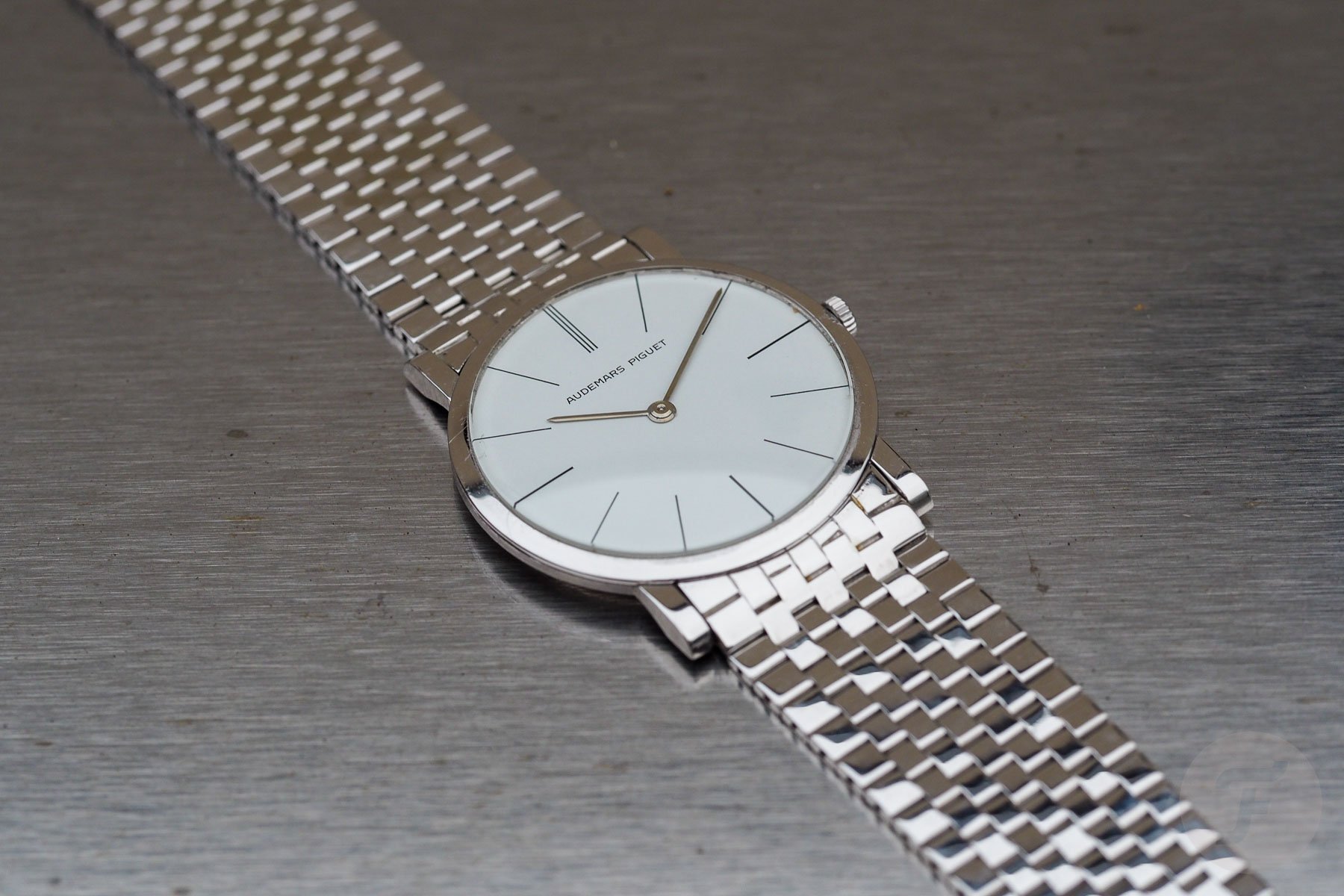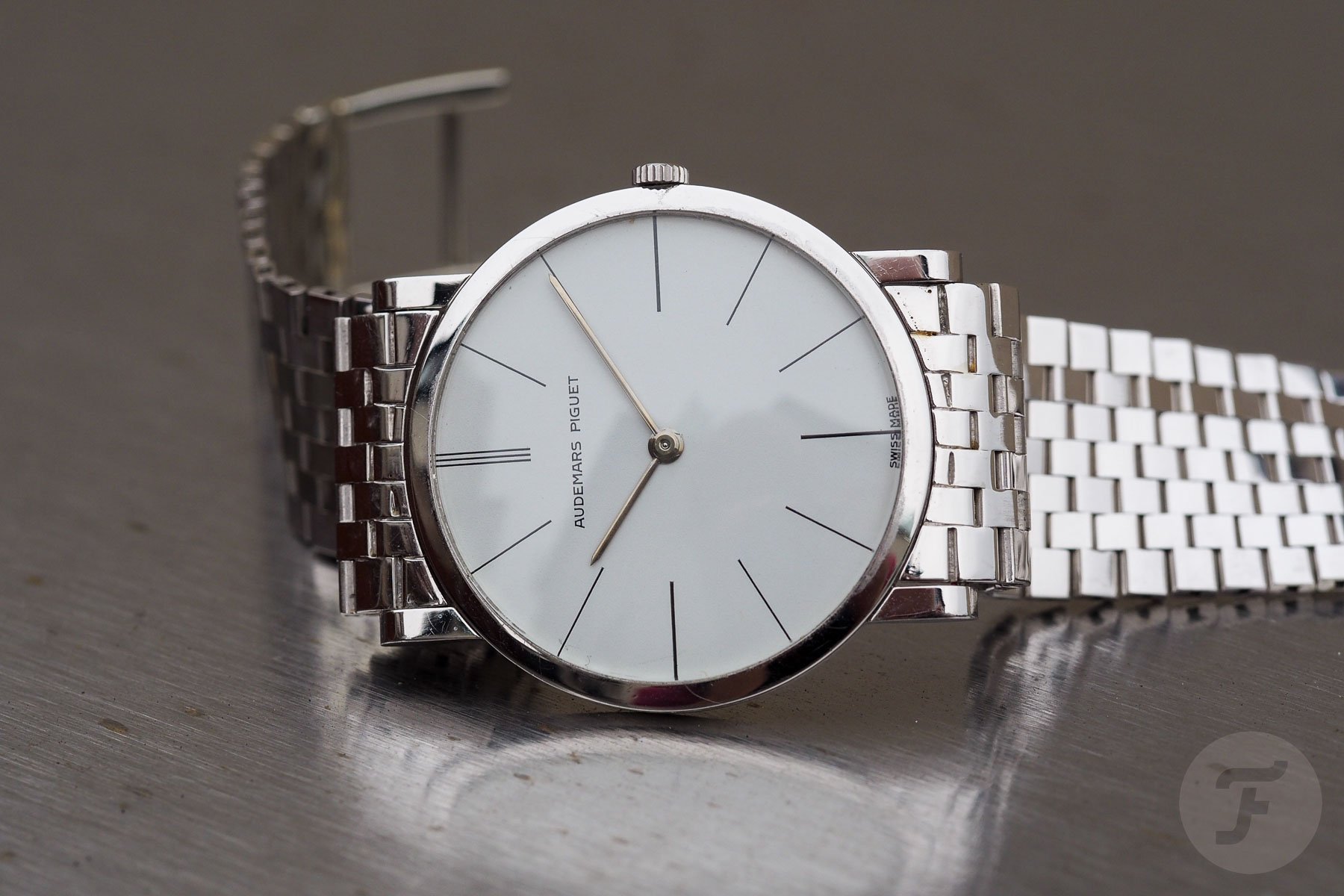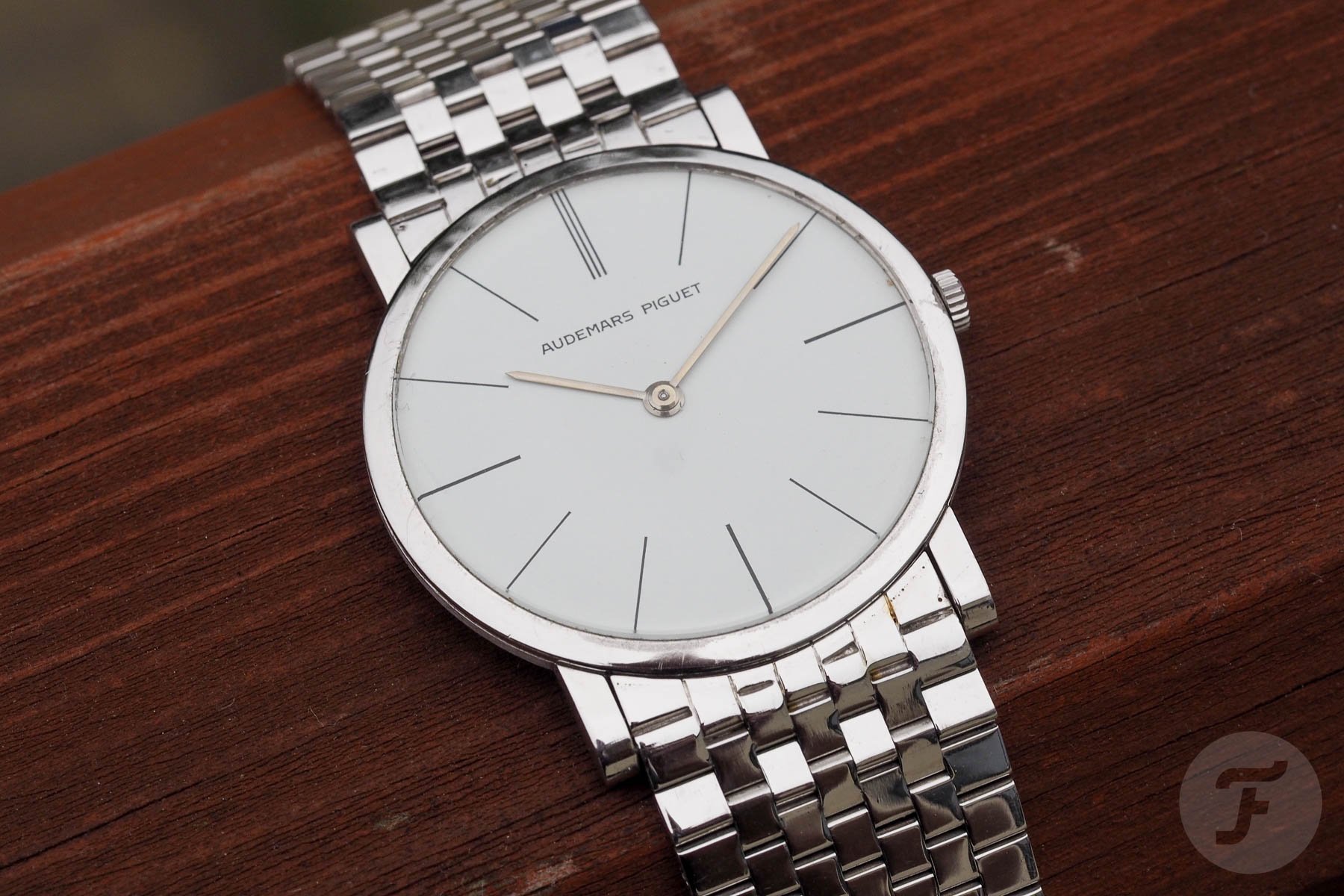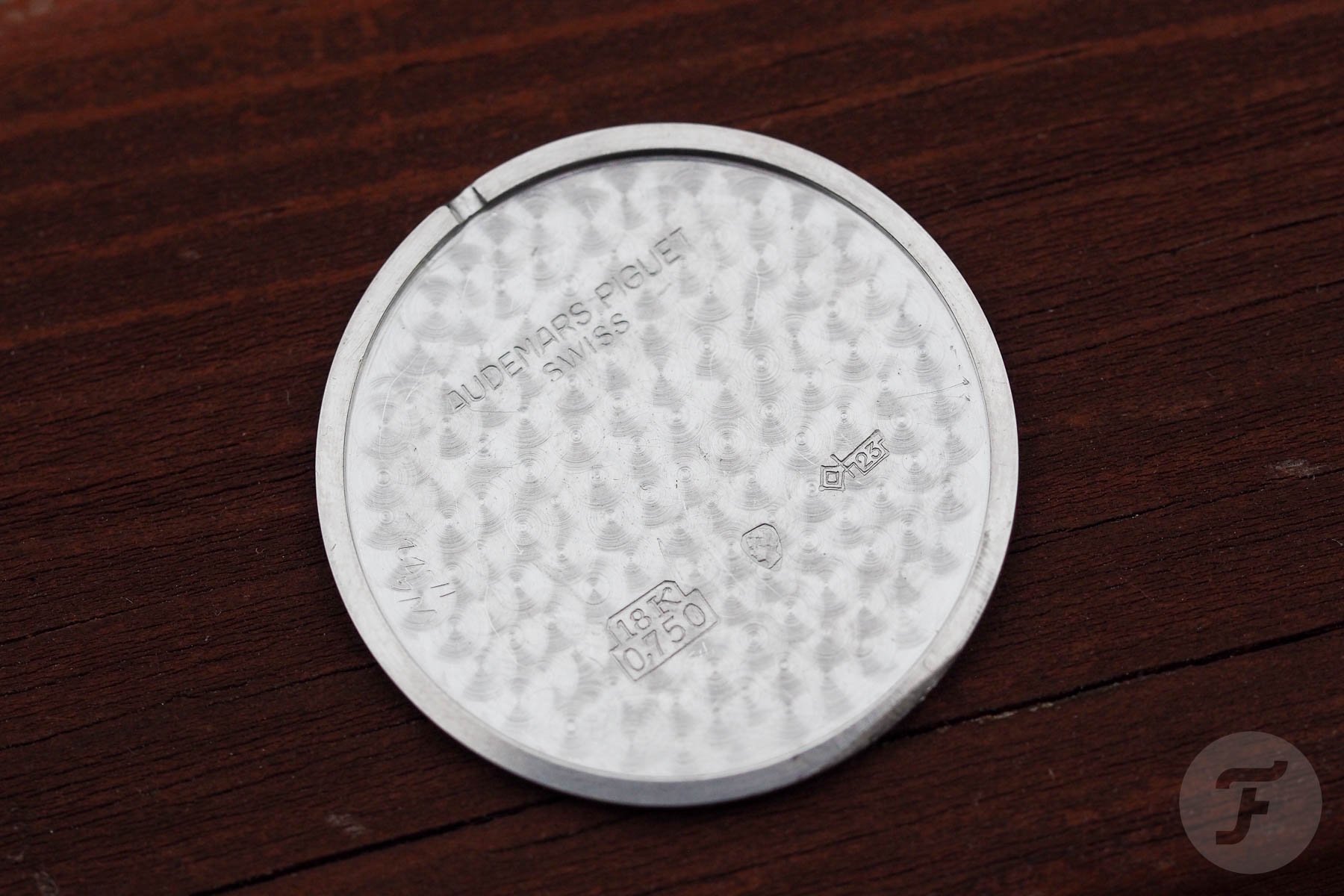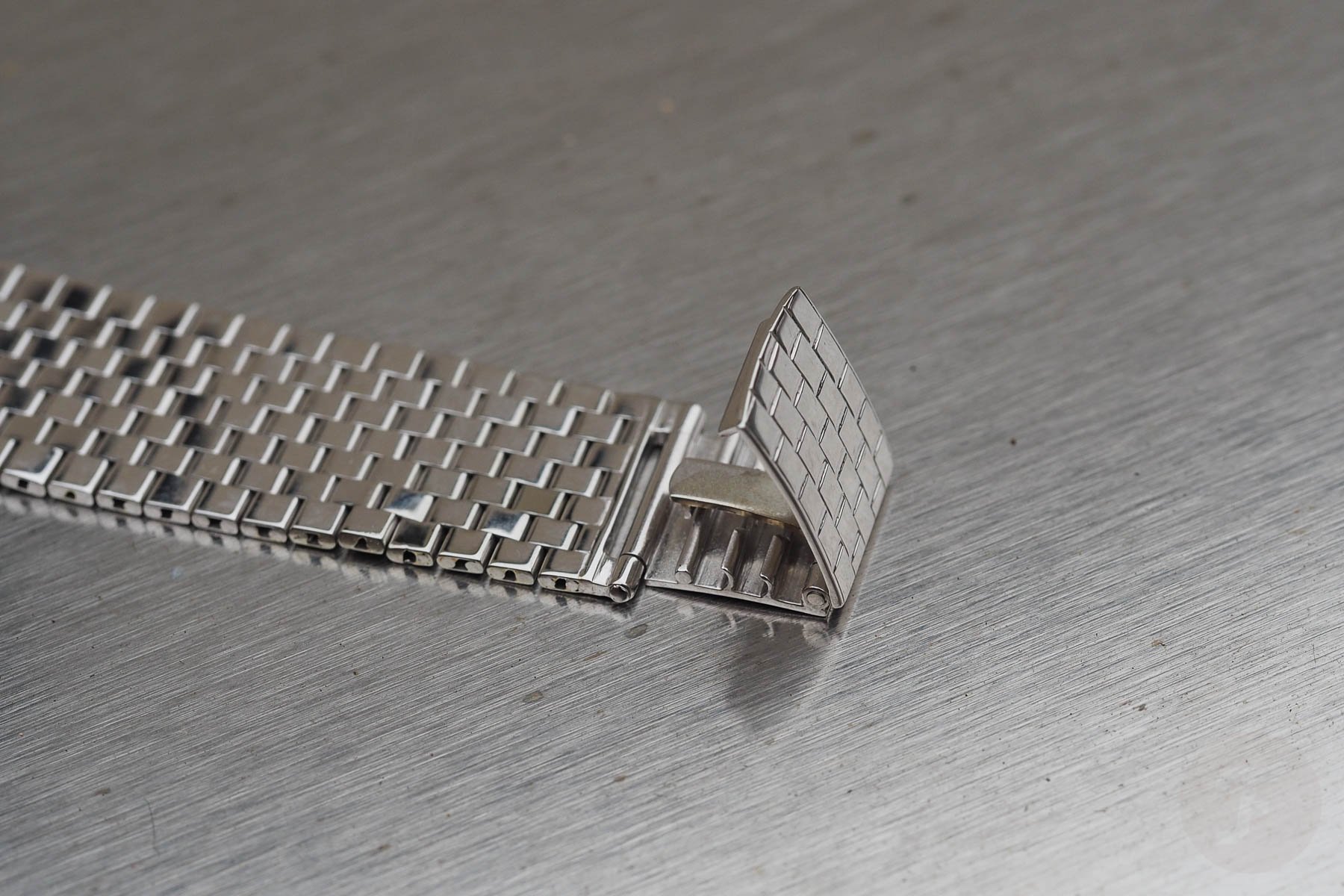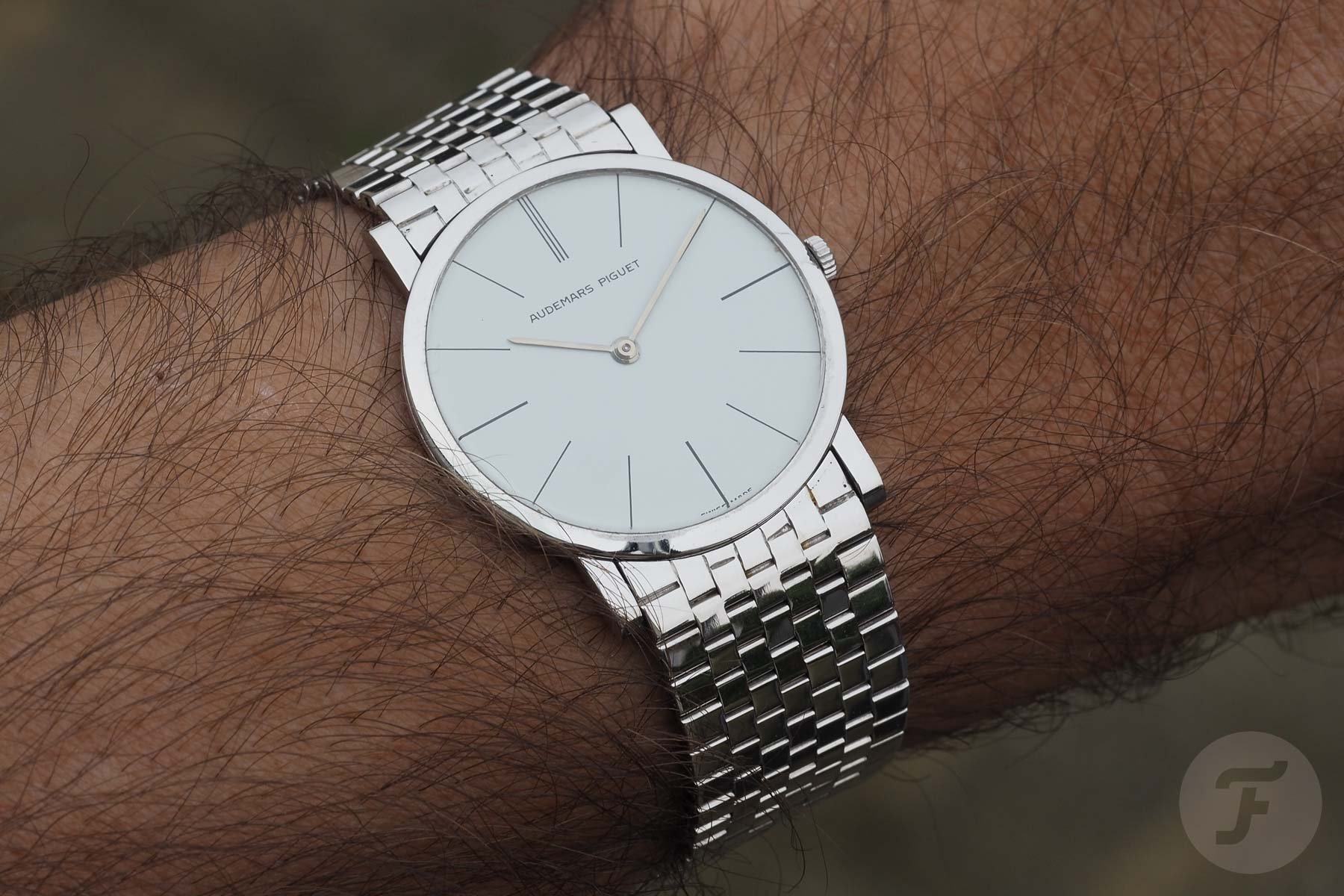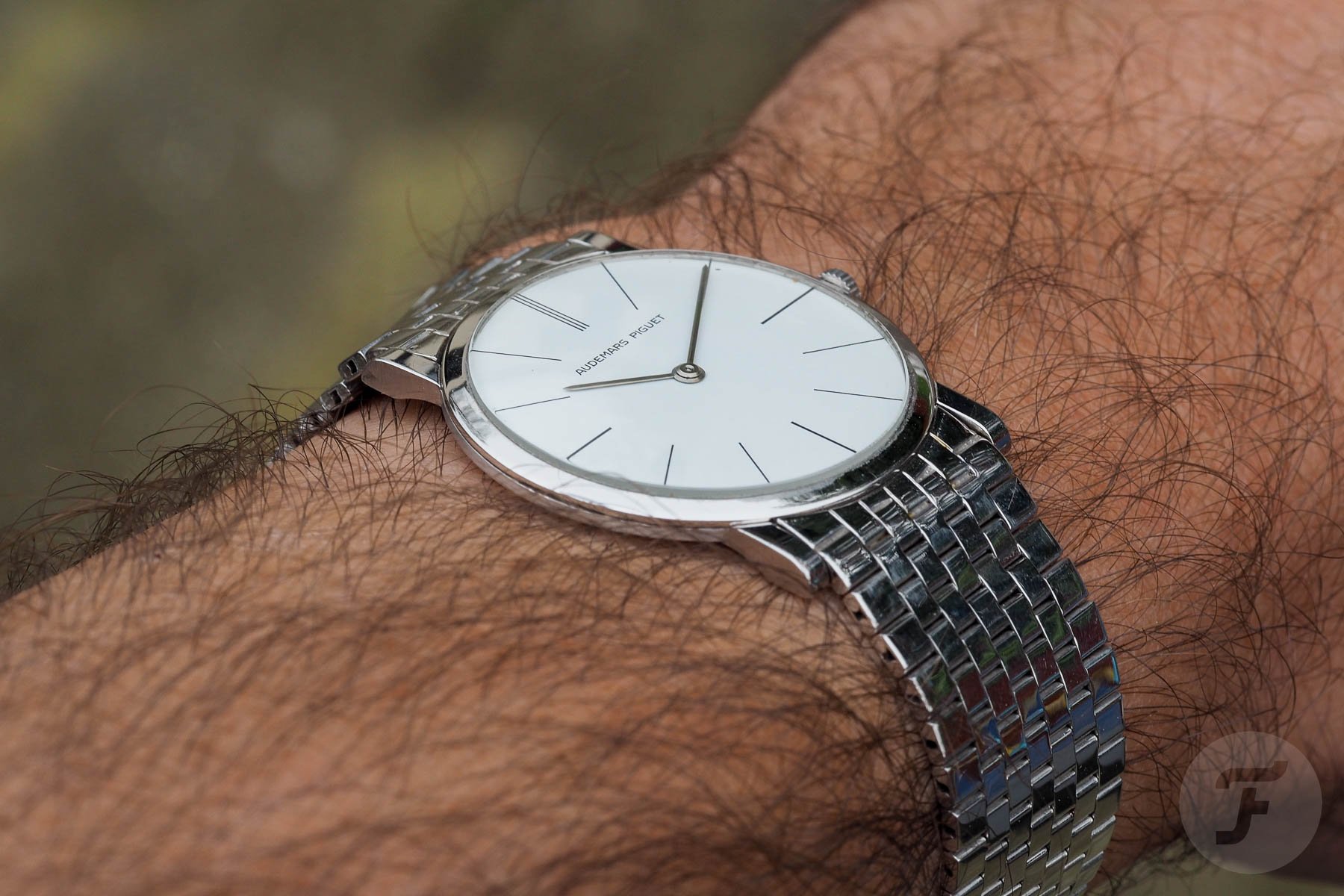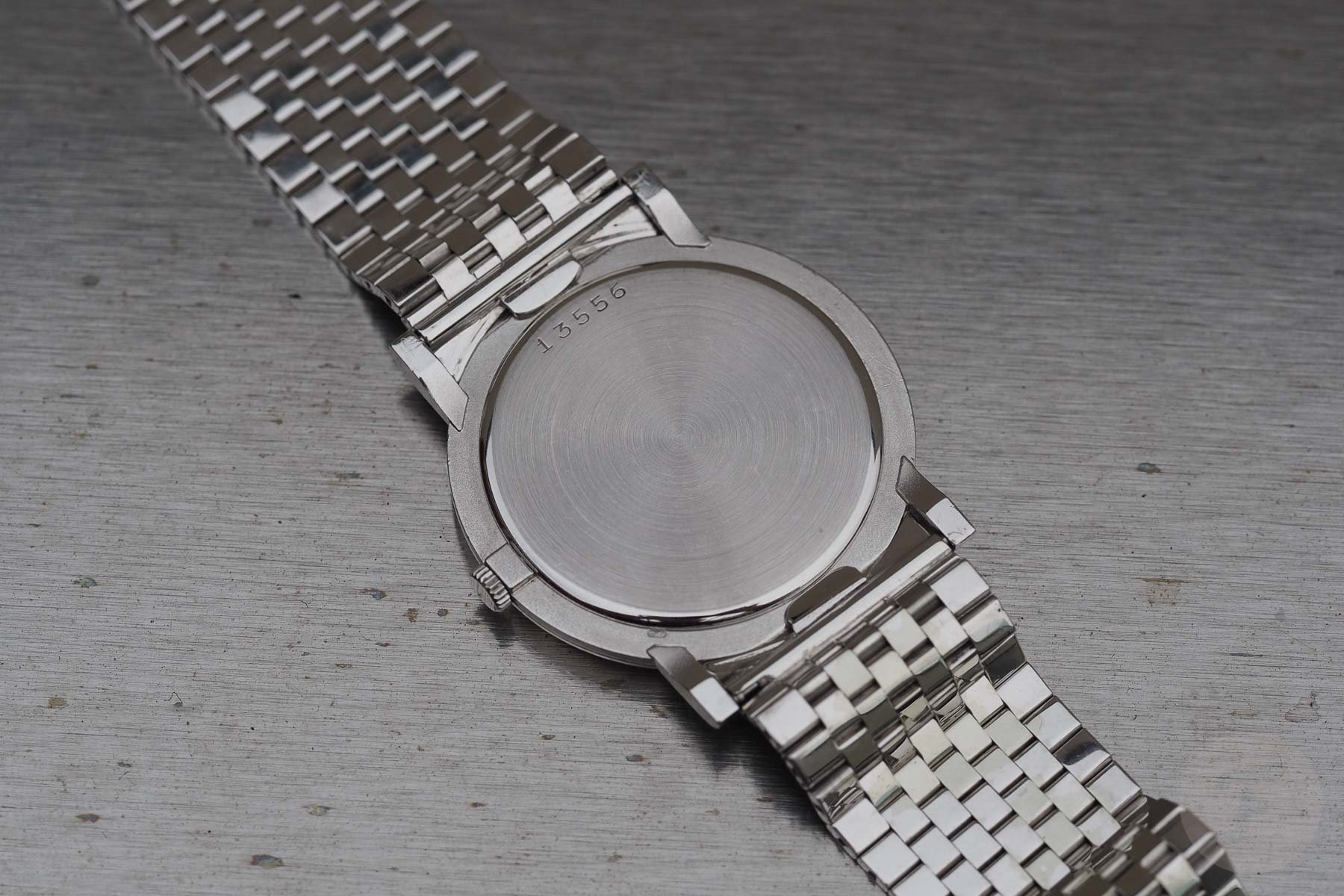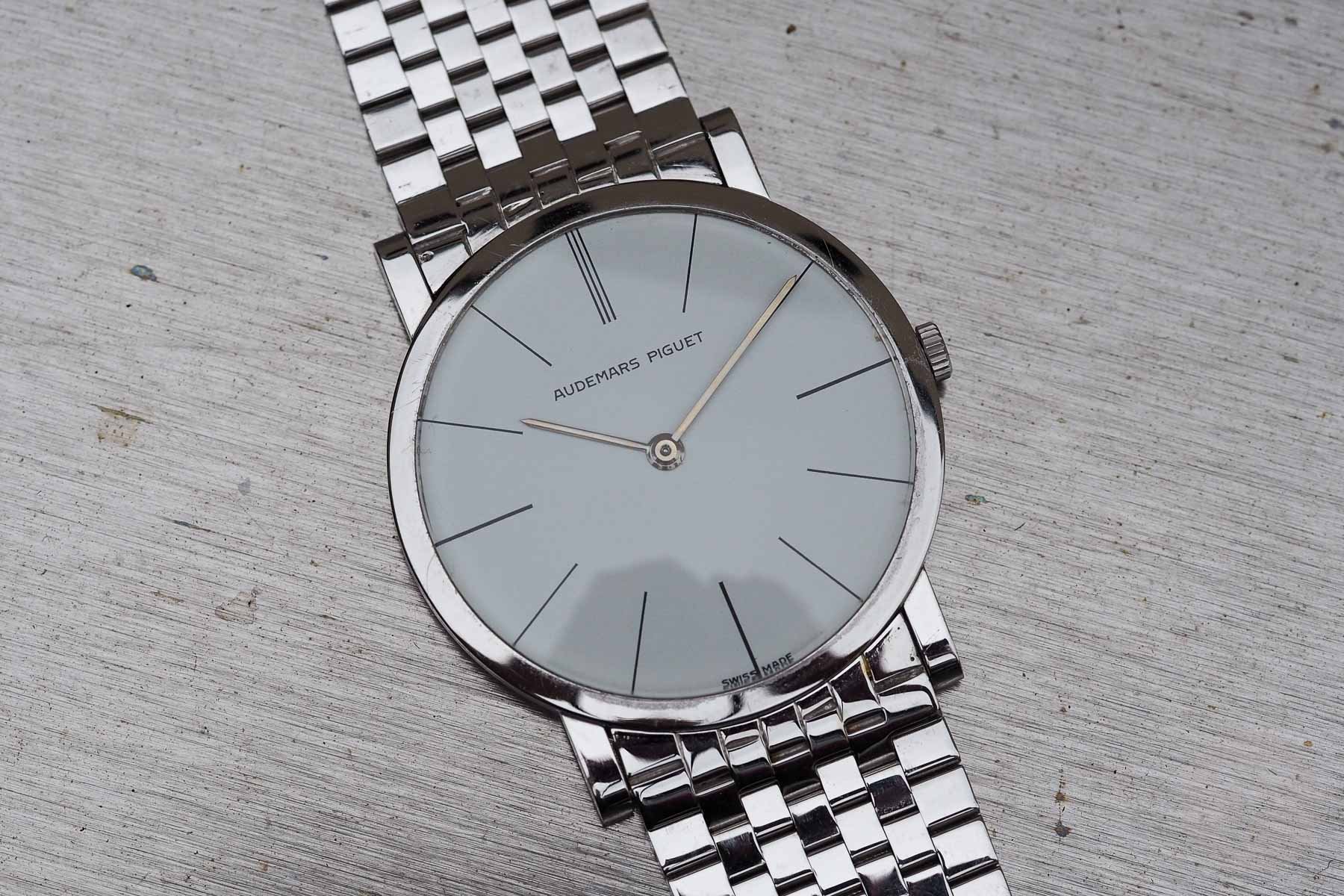In-Depth: The Audemars Piguet 5043BC “Ultra-Thin” And Caliber 2003
If 100 people were asked about the first words that come to mind when “Audemars Piguet” is spoken, I wager that almost all would respond with “Royal Oak.” That signals how popular Gérald Genta’s groundbreaking 1972 design has become. However, before this and even after the Royal Oak was released, Audemars offered a very different type of watch that comprised most of its sales. The “Ultra-Thin,” often equipped with the mechanical 2003 caliber, was an essential dress watch, if not the essential dress watch.
Patek Philippe receives the lion’s share of adoration for its vintage offerings. The brand was influential in watch and movement design and produced a vast catalog of complications. Other brands, including Audemars and Vacheron, dabbled in more complex watches but focused heavily on dressier models and bejeweled ladies’ pieces. They weren’t jewelers with a side hustle in watchmaking, but scrolling through 1950s advertisements tells us that a brand like AP hung its hat on exclusivity. Oddly, and nothing against Patek, an Audemars Piguet watch was less common and, in many cases, more expensive.
Thin movements and thin watches
It’s entertaining to read about the early days of brands we now regard as well-run, highly professional industry titans. Looking at articles from AP Chronicles reveals the tight bond between watchmakers and suppliers in the Vallée de Joux. Because of this, Audemars, LeCoultre, and Vacheron ultimately came together to develop ultra-thin movements. But let’s briefly discuss the quest for thinness.
While many enjoy a thin watch, the initial rationale for chasing tenths of a millimeter is far simpler. Making a thin movement, especially a century ago, allowed a watch company to exhibit its technical prowess. If a movement could achieve accuracy and reliability while displaying fine finishing in an ultra-thin design, why not do it?
Caliber 2003
In 1938, Audemars Piguet released the thinnest wristwatch movement in the world. The 9ML, at just 1.64mm slim, followed the brand’s record-setting 1.32mm-thick pocket watch movement. The hand-wound caliber was a marvel, but it wasn’t overly robust. Undeterred, Audemars Piguet worked together with Jaeger-LeCoultre and Vacheron Constantin in the early ’50s to make the 9ML more suitable for serial production. The result was caliber 2003 in 1953. Before we delve into the movement and the long-running watch using it, let’s look at some period articles and advertisements.
A bit about Audemars-Piguet
It’s fun to travel back in time to see how brands were perceived 70 years ago. Today, Audemars is batched into the same group as Patek, Vacheron, and other luxury Swiss watchmakers. In the ’50s, the view of the brand was slightly different. A Patek was undoubtedly special, but an AP was truly special. My research through old newspaper ads and articles showed that Audemars Piguet specialized in gem-set watches for ladies. For me, the brand created thin marvels. As we can see in a blurb from 1963, an AP was the most expensive watch in the world.
When it came to thin watches, the press took notice. In 1953, the 2003 movement debuted and, presumably, was used in a publicity stunt to slice a steak.
We can also see that a thin Audemars Piguet was seen as a pricey luxury object. It was so fancy that sarcasm came into play!
An advertisement from 1955 proclaims that the Audemars Piguet was the world’s thinnest wristwatch. As we’ll see, AP held this title (perhaps with the addition of the word “mechanical”) for the next 50 years.
Back to the movement
Audemars Piguet had exclusivity over the use of the 2003 caliber for the first two years. After 1955, Vacheron and JLC could also place it within watches. Apparently, JLC sold it as the 803 caliber but never used it in its watches.
The 2003 may have been stiffened by reducing the number of bridges, but it’s still a beautiful movement. Compared to modern movements, it’s full of bridges! The finishing is representative of a high-end movement, including anglage and engine turning. Spec-wise, the powerplant has a frequency of 18,000vph and a power reserve of 36 hours. These specs aren’t sexy, especially today, but remember that the movement is just 1.64mm thick.
A notable application
Caliber 2003 saw use in several applications. Perhaps the most famous was the ultra-thin “Disco Volante.” These 36mm pieces were just 5mm thick and must have looked avant-garde for the time. Today, these watches are highly desirable and sell for serious sums. I invite you to read Tony Traina’s fantastic overview of these models on Hodinkee. Audemars Piguet produced the Disco Volante models briefly, but another model became the brand’s top seller for decades.
The Audemars Piguet 5043BC Ultra-Thin
Whenever I visit home in South Florida, I do my best to fight the turnpike traffic and visit Wind Vintage in Palm Beach. Before leaving for America, I always peruse the shop’s website and silently pray that nothing steals my heart. Earlier this year, I was preparing for a trip and went through this ritual. Thankfully, nothing struck me as a “must-have.” A week later, all that came crashing down when I came face to face with the Audemars Piguet 5043BC Ultra-Thin.
I admit that the AP intrigued me a week earlier when I saw it listed for sale. However, due to its mere 31.5mm diameter, I foolishly dismissed it. Plus, I also chalked it up as a run-of-the-mill ’50s dress watch with stick lugs. Yes, the watch was created by a highly regarded maker, but it didn’t jump from the page. How wrong I was…
A critically important watch for AP
The Audemars Piguet 5043BC was released in the early ’50s with the 2003 caliber and was made through the ’60s with few changes. Similar models, albeit with more modern dials, soldiered on until the early 2000s. To this day, the watch is still one of the thinnest timepieces in history. As an aside, the Ultra-Thin moniker isn’t official, but many use it to identify these watches. The movement and the case design also formed the backbone of the Audemars Piguet lineup for decades. Even after the Royal Oak debuted in 1972, the Ultra-Thin was still an important part of the collection.
The 5043BC Ultra-Thin is a deceptively simple watch. I say that because I passed it off as a boring stick-lugged dress piece, but there’s much more to it. Before I break it down, it’s important to mention that the design of this watch is largely attributed to Gérald Genta. I’ve never seen proof of this, but Genta worked heavily with AP during this timeframe. Regardless of who designed the watch, it’s a subtle masterpiece and a lesson in proportionality.
A case with perfect proportions
I’ve spent time thinking about the 5043BC Ultra-Thin and why it differs from the thousands of similarly-styled watches. In a nutshell, the 5043BC, even with relatively diminutive measurements, looks substantial and masculine. Head on, the beefy lugs and relatively thick bezel provide visual heft whereas other watches look spindly and delicate. Even the basic, flat-topped crown continues its powerful form.
Wildly thin
For many, it’s the side view of the 5043BC Ultra-Thin that will capture attention. The watch is impossibly thin at roughly 5mm from the surface of the case back to the top of the gradually cambered mineral crystal. The lugs have barrel-shaped tips with a flat bottom surface. Look at the precision of the three-part case. There was stunning metalwork happening 70 years ago!
Regarding the case maker, it was none other than Eggly & Cie. from Geneva. The #23 within the Key of Geneva Poinçons de Maître can be cross-referenced here. Eggly was one of the finest Swiss casemakers and supplied Audemars, Vacheron, Patek, and more.
A perfectly designed dial
While Disco Volante models often have eccentric dials, the 5043BC Ultra-Thin dials are the definition of simple. A white lacquer dial contains printed black lines for indices. The lines at 3, 6, and 9 o’clock are thicker, and the index at 12 consists of two parallel lines. The only other details are the brand’s signature on the top half and “Swiss Made” at the very bottom. This dial lacks any “Geneve” marking, which Eric explained as a one-year design difference likely from 1956.
The bracelet sold me
When I visited Wind Vintage, I asked to see the Audemars Piguet 5043BC Ultra-Thin. The case design and the thinness were surprising, but the bracelet made me reach for my wallet. These watches came standard with black straps and pin buckles, but bracelets were also an option. Eric explains that Audemars Piguet offered yellow gold versions on mesh bracelets while white gold models were also available on a Gay Frères bracelet with brick-like links.
I’ve held, felt, and worn many bracelets, but this is easily the most exquisite piece of jewelry-making I’ve encountered. The suppleness and fineness are unmatched. I’d love to see a brand make something like this today if possible, but I’d hate to see the price. The bracelet starts at 18mm and tapers to 16mm wide at the clasp. Admittedly, it is short, which is why Eric sold it from his collection. It features a lovely snapping clasp with an underlying secondary clasp. There are ridges for adjustment. The longest setting shows some skin, and this bothered Eric. I’m able to wear it in the tightest setting as long as I avoid drinking too much cask ale!
How does it wear?
You should consider returning to the story if I lost you because of the 31.5mm diameter. The 5043BC Ultra-Thin isn’t a large watch, but it’s wildly deceptive. The lug-to-lug is roughly 36mm, but on the bracelet, it lengthens to 41mm. The first row of links after the lugs do not articulate (a good move for durability), making the watch larger.
Like the Calatrava 570 I own, this watch has widely spaced lugs. Most brands used a 16mm lug gap, making their watches look much smaller. The thicker lug design also helps beef up this AP along with the sparse white dial. My only complaint about wearing the Ultra-Thin is that it gets a bit lost on my furry wrists. Oh well!
Finding your 5043BC Ultra-Thin
It’s relatively easy to find an Audemars Piguet Ultra-Thin reference. Models with the 2003 movement are available on various online auction sites and dealer pages. Many are in Japan because of the popularity of smaller dress watches there. Later automatic versions are also prevalent. The challenge, however, is finding a good one. A watch like the 5043BC Ultra-Thin offers no water resistance, and because of this, most examples show unsightly staining, have refinished dials, or both! Indeed, I wear this watch infrequently because the thought of ruining this pristine dial gives me pause. I’d hate to risk damaging it while washing my hands or by stepping out of an air-conditioned store into the humid London air.
If you find a nice piece on a strap, expect to spend around €4,000. Add 50% or more for a lovely model on a bracelet. In either case, it’s an astounding amount of watch for the money. Run, don’t walk, away from polished examples. I was fortunate to find an unmolested piece with sharp lug edges. Look for matte finishing on the lugs and mid-case. The circularly brushed center of the case back will bear a serial number. Finally, the media-blasted outer section of the case back should have a hallmark.
Final takeaways
The Audemars Piguet 5043BC is an amazing watch with a movement that had an amazingly long production run. It was an important model for the brand and deserves consideration as one of history’s great dress watches. Plus, it shows there was life at AP before the Royal Oak. If you’ve ever tried one or can remember seeing them new, let us know your thoughts and experiences.

